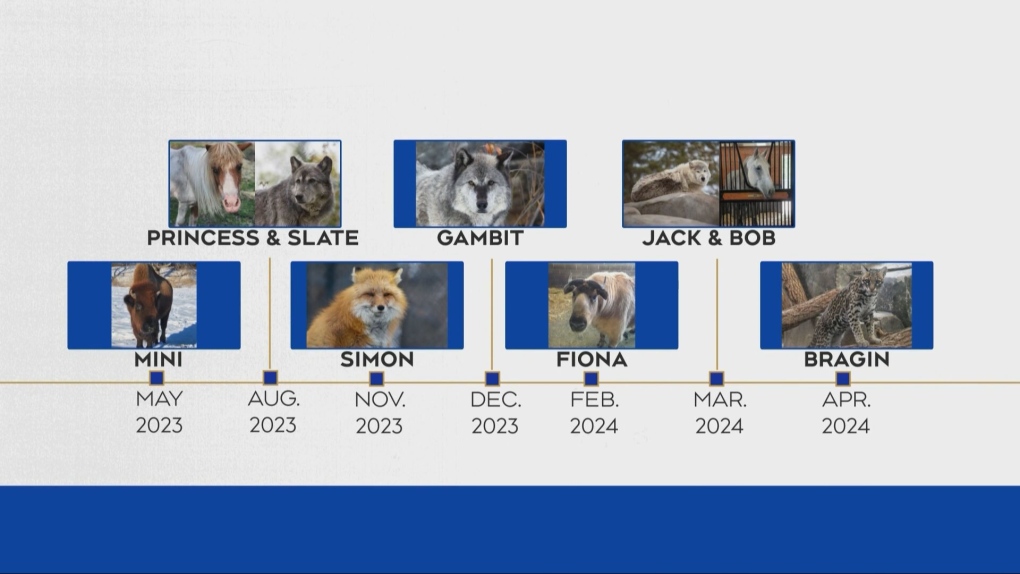‘We always have a thoughtful process for that’: The dark reality facing aging zoo animals
Anyone who visits Assiniboine Park Zoo can see empty or near-empty exhibits scattered throughout the grounds – spaces that previously served as homes for aging animals that have since passed away.
That includes one enclosure in the park’s Toucan Ridge area where Bragin the ocelot lived. The nearly 24-year-old cat came to Assiniboine Park Zoo in July 2011, but after his health took a turn for the worse last week, he was euthanized.
“He arrived as a middle-aged cat and he lived the duration of his golden years here at the zoo, well beyond the natural lifespan of an ocelot,” said Chris Enright, the zoo’s senior director of zoological operations.
 A timeline of animals that have recently died at the Assiniboine Park Zoo. (CTV News Winnipeg)
A timeline of animals that have recently died at the Assiniboine Park Zoo. (CTV News Winnipeg)
Since last May, at least 10 animals have died at the zoo, including three wolves. Now, only one lone wolf remains.
“We’re committed to that existing wolf for the duration of his lifespan, whatever that might be,” Enright said. “And at the conclusion, we’ll have a thoughtful approach and look at bringing in a new group of wolves after that.”
One expert said zoos like the one at Assiniboine Park should reconsider that approach and the role they play in Canadian society.
“Keeping wild animals for entertainment is really indefensible at this point, but there are other valid roles that they can play,” said Kaitlyn Mitchell, the director of legal advocacy at Animal Justice Canada. “They could look to more of a sanctuary model, so taking in animals in need or playing more of a conservation role.”
As more and more animals age, conservationists are worried about a possible hunt for fresh blood.
“There’s going to be extra pressure to take from the wild, which is not a good idea if the wild animals are themselves in decline,” said Barry MacKay, Animal Alliance of Canada’s Wildlife Issues Director.
In terms of its overall animal population, the Assiniboine Park Zoo said it’s not in decline despite the recent deaths.
“We’re certainly committed to maintaining an animal population that is highly engaging for our guests, that connects people with conservation and really fosters caring,” Enright said.
When it comes to its ocelot exhibit though, Enright said they’ll be figuring out what’s next over the summer months.
“This summer we will go through our processes to decide, ‘Is another ocelot the right answer?’ or is a different species the right answer to really achieve the goals of having animals in human care,” he said.
View original article here Source




